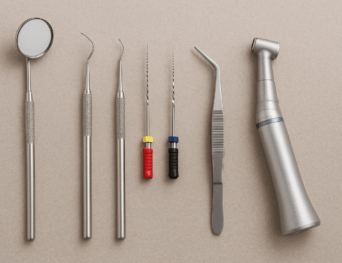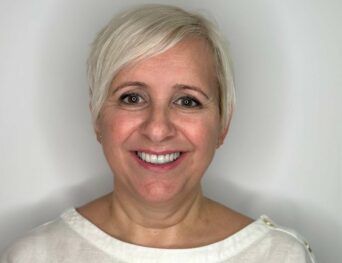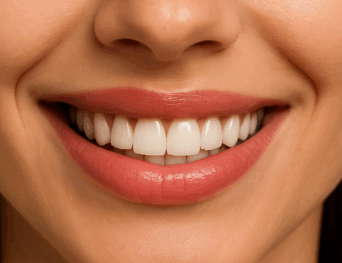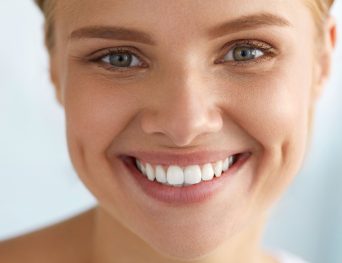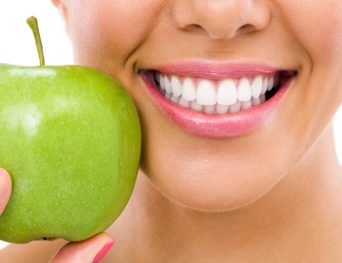Bruxism and Night Bruxism
Bruxism and Night Bruxism
Bruxism is a parafunctional habit that consists of clenching or rubbing the teeth of both jaws without a functional objective such as chewing. Bruxism can affect both adults and children, and both sexes alike. The most striking consequence in the short term is the wear of dental pieces, but also damages other structures involved in chewing, such as the Temporomandibular Joint and the masticatory musculature.
Classification
Bruxism is classified according to the moment of presentation, its intensity and the way of moving the teeth.5
Depending on the way the teeth grind
centric bruxism (clenching), damages the neck of the teeth generally causing cervical abductions, the premolars being the most commonly damaged parts by the inclination of their crowns in relation to the axis of their roots. In addition to being accompanied by tension type headaches.
Eccentric bruxism (rubbing), damages the incisal and occlusal edge of the teeth, generating attritions in different degrees. The excursive movements of the jaw follow a definite pattern that is related to the wear on the pieces (at the time of sliding the teeth, the wear is coincident), it mostly affects the incisors.
Both types of bruxism can be simultaneous in the same patient and the signs in the dental pieces may or may not be present depending on the intensity and duration of the episodes. In addition, they are often confused with other non-carious lesions caused, for example, by traumatic brushing.
Depending on the time of presentation
Sleep bruxism (formerly called night bruxism): Occurs during sleep. Generally, the oneiric bruxomaniac patient is not aware of the problem, and the data of this parasomnia come from the bed or roommates alarmed by the noise of the teeth, and also from the dentists who observe the destruction of the enamel and the dentin.1 It appears in stages 2 and 3 of non-REM sleep (NREM). In an 8-hour sleep cycle, the bruxomaniac episodes border on an average of 17 and 38 minutes per night.
Wakefulness bruxism (formerly daytime bruxism): Occurs during wakefulness, usually unconsciously associated with periods of work-related stress.6
According to the degree of affectation
Grade I (incipient habit):
The presentation is not aggressive, its reproduction is for a short period of time and sometimes occasionally, although it may be unconscious for the patient, it is reversible as it appears and fades on its own, 7 may disappear when the subject makes it conscious , may be conditioned to local factors inside the mouth, which when detected and removed promptly allow the prevention and elimination of it. Anxiety may be absent in the patient.
Grade II (established habit):
7 In this degree the anxiety is already present, the reproduction is conditioned to the facilitating factors, the presentation is unconscious for the patient and disappears when the subject makes him conscious, at this stage lesions in the dentofacial structures may be present so a comprehensive treatment is required to ensure its elimination. The grade II habit can be reversible, if not treated it can develop into a grade III habit.
Grade III (powerful habit):
Reproduction is constant even within the family and social environment by incorporating the patient. The presentation is strengthened and well established, it is excessive and irresistible for the subject who suffers it even if conscious.7 The lesions in the dentofacial structures are of considerable magnitude and in some cases the lesions are permanent. The powerful habit is difficult to handle and the results of the treatment are unsatisfactory, so it requires more attention and dedication in the development of techniques by the dentist who implements them.
Diagnosis
Bruxism is a parafunctional movement. It is a tooth contact other than those of chewing and swallowing. When the diagnosis is established during a dental examination and if in these patients the lesions are usually minimal or imperceptible, no local treatment is indicated but rather the attention to anxiety disorders is established. While it is true there are clear signs such as morning headaches, dental abfctions and attritions, and even third-party accounts, the gold standard for the diagnosis of bruxism remains polysomnography.
The bruxism is unconscious until it becomes known to the patient, the first to detect it is the dentist when observing the excessive wear of the teeth (facets) in functional areas and moderate wear in non-functional areas, widening of the occlusal areas and reduction of The vertical dimension of the face, sometimes it is the relatives who put the patient on alert because it becomes silent and annoying when silent.
At first the patient “plays” with dental contact without force or contraction, however, under a state of emotional tension, there is a greater pressure exceeding the threshold of periodontal receptors to pressure and the patient is no longer conscious and the muscles are no longer They don’t relax. It is difficult to obtain a diagnosis without the testimonial interrogation if the patient does not know the problem, so that family members are asked for help to verify the situation, they are asked that during the patient’s deep sleep they try to open the mouth by taking it with the index fingers and thumb by the chin trying to separate the teeth, in the normal state of rest the mouth will open satisfactorily, otherwise, a state of tension, it will become difficult to separate them.
Bruxism is the involuntary habit of tightening or grinding dental structures without functional purposes.
Bruxism affects between 10% and 20% of the population; and can lead to headache and pain in the muscles of the jaw, neck and ear. Gnashing can wear teeth and be very annoying for other people with misophonia.
In cases of bruxism, it is necessary to place a resin dental protection, known as a discharge splint, to prevent injuries to the teeth.
It consists of using a relaxation plane while you sleep, which is made with exact fit in your mouth, is placed on your upper teeth and protects them so that they do not squeak against the lower ones.
-
Me ha gustado mucho
Me han tratado muy bien en la clínica dental Dávalos & Balboa.
Manuel Martinez




